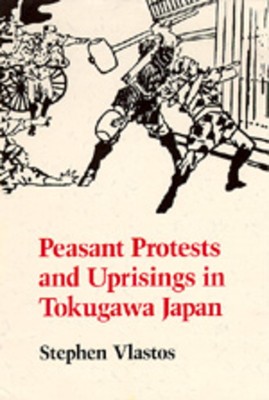
- We will send in 10–14 business days.
- Author: Stephen Vlastos
- Publisher: University of California Press
- ISBN-10: 0520072030
- ISBN-13: 9780520072039
- Format: 14 x 20.8 x 1.2 cm, softcover
- Language: English
- SAVE -10% with code: EXTRA
Reviews
Description
The Japanese peasant has been thought of as an obedient and passive subject of the feudal ruling class. Yet Tokugawa villagers frequently engaged in unlawful and disruptive protests. Moreover, the frequency and intensity of the peasants' collective action increased markedly at the end of the Tokugawa period. Stephen Vlastos's examination of the changing patterns of peasant protest in the Fukushima area shows that peasant mobilization was restricted both ideologically and organizationally and that peasants did not become a prime moving force in the Meiji Restoration.
EXTRA 10 % discount with code: EXTRA
The promotion ends in 16d.21:00:32
The discount code is valid when purchasing from 10 €. Discounts do not stack.
- Author: Stephen Vlastos
- Publisher: University of California Press
- ISBN-10: 0520072030
- ISBN-13: 9780520072039
- Format: 14 x 20.8 x 1.2 cm, softcover
- Language: English English
The Japanese peasant has been thought of as an obedient and passive subject of the feudal ruling class. Yet Tokugawa villagers frequently engaged in unlawful and disruptive protests. Moreover, the frequency and intensity of the peasants' collective action increased markedly at the end of the Tokugawa period. Stephen Vlastos's examination of the changing patterns of peasant protest in the Fukushima area shows that peasant mobilization was restricted both ideologically and organizationally and that peasants did not become a prime moving force in the Meiji Restoration.


Reviews